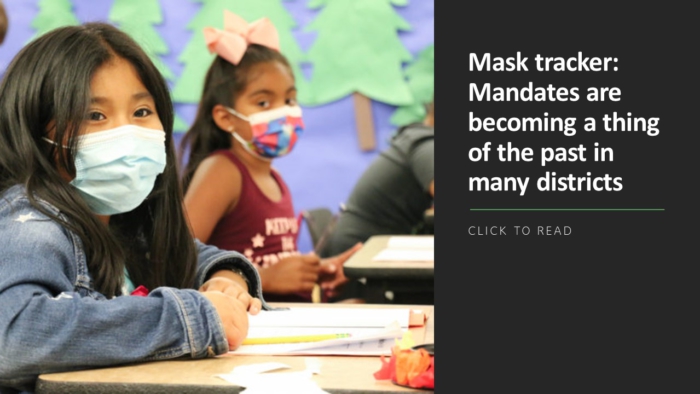Ten-year-old Helena showed up at school looking disheveled and complaining of a stomach ache. When she went to see the school nurse, Ms. Jones, Helena confided that she hadn’t eaten anything since dinner the night before—and upon further questioning, Ms. Jones learned that dinner hadn’t amounted to much either.
Ms. Jones was alarmed. Helena wasn’t the first child that week in a similar situation. Dozens of students and their families struggled with food insecurity.
But instead of helping Helena and the others, Ms. Jones had to spend the next three hours subbing for a teacher who called in sick because there are no substitute teachers to be found. She felt overwhelmed and frustrated—she wanted to help Helena, but there was no time to make the phone calls to get her the resources she and her family needed.
Compounding challenges create youth and family crises
While that scenario is fictional, I experienced similar situations as a former school-based therapist, and know firsthand how overwhelming it can feel. There’s so much you want to do to help, but the time and resources simply aren’t there.
Sadly, Ms. Jones is far from alone. Stories of overwhelmed school staff are increasingly common, as school systems across the country face extraordinary challenges, including staffing shortages, both in the classroom and in support roles. This leaves nurses, counselors and social workers with far more student needs than they can possibly fulfill. They’re overwhelmed as they’re pulled in to help with tasks that take them away from their primary job duties—like subbing in classrooms instead of caring for students’ physical and mental well-being.
In the wake of COVID, student health and safety, including mental and behavioral health, has never been more important—or more challenging. COVID drove a 300% increase in health and social care referrals for students and families, primarily for food, housing, shelter, utility assistance and benefits navigation. School closures at the height of COVID made it difficult to connect students to resources, highlighting the pivotal role neighborhood schools play as a central community resource.
FETC 2023
The Future of Education Technology® Conference takes place live and in-person Jan. 23-26, 2023, in New Orleans. Register now!
Now, even as schools reopen, providing family, social and community support is harder than ever as current unmet needs combine with a backlog of care. Students and their families are falling through the cracks, while staff are increasingly burned out and quitting their jobs in droves, leaving school systems struggling to fill gaps.
Educator shortages that predate the pandemic have grown in the past two years, and now include other positions such as bus drivers, school nurses and food service workers. There are now 389,000 fewer school staff members in K-12 and higher education than before the pandemic, according to the National Education Association. And among those who remain, 90% say burnout is a serious problem, and over half say they’ll quit teaching sooner than planned.
These staff shortages combined with the lack of efficient systems for building and navigating support networks make it harder and more time-consuming for staff to connect families with services and provide the necessary help.
Technology to connect students to care is essential
COVID forced schools and educators to quickly ramp up access and skills to implement advanced technology, allowing them to transition their role in the classroom to the home in an unprecedented way. Even as COVID lessens, we should continue to embrace these tools to support children’s additional needs outside of the classroom that influence their ability to learn.
More from DA: Will schools ever provide universal free meals? Now, help is on the way
We understand now more than ever, that technology helps us to more efficiently refer children and their families to the resources and social care they need. These are essential social services, and we must provide school staff with the proper tools to deliver this much-needed care to every student in need.
Deploying social care coordination platforms that pull together networks of community organizations and ease access to resources like shelters and food banks is essential to make this happen at the speed and scale required for today’s communities. By streamlining the process for referrals and care delivery, care platforms make it faster and easier for staff to serve students’ needs and for students and families to get access to community resources such as food and housing support, mental and behavioral health care and more.
Care platforms also provide a system for tracking care delivery and utilization, which not only helps measure the effectiveness of these programs, but also identifies additional areas of support required so providers can refer and deliver ancillary or secondary services when needed.
Making the process more efficient helps alleviate the overwhelming burden on staff, to help them meet students’ needs without sacrificing their own well-being in the process. With advanced technology in place, school systems can better attract and retain talent by using their progressive approach as a differentiator in a competitive hiring market.
We must act now
Between the growing unmet needs and no end in sight to staffing shortages, educators are drowning deeper with no life raft in sight. Meanwhile, the physical, mental, behavioral and social well-being of children, families and communities continues to decline due to COVID isolation and resource shortages.
To disrupt the status quo and turn the tide, school leaders must be resolute in deploying accessible technology and tools that address needs head-on. The only way to overcome the current deficit and plot a stronger, healthier way forward for communities is by giving nurses, counselors and social workers modern and accessible tools to efficiently serve community needs.









